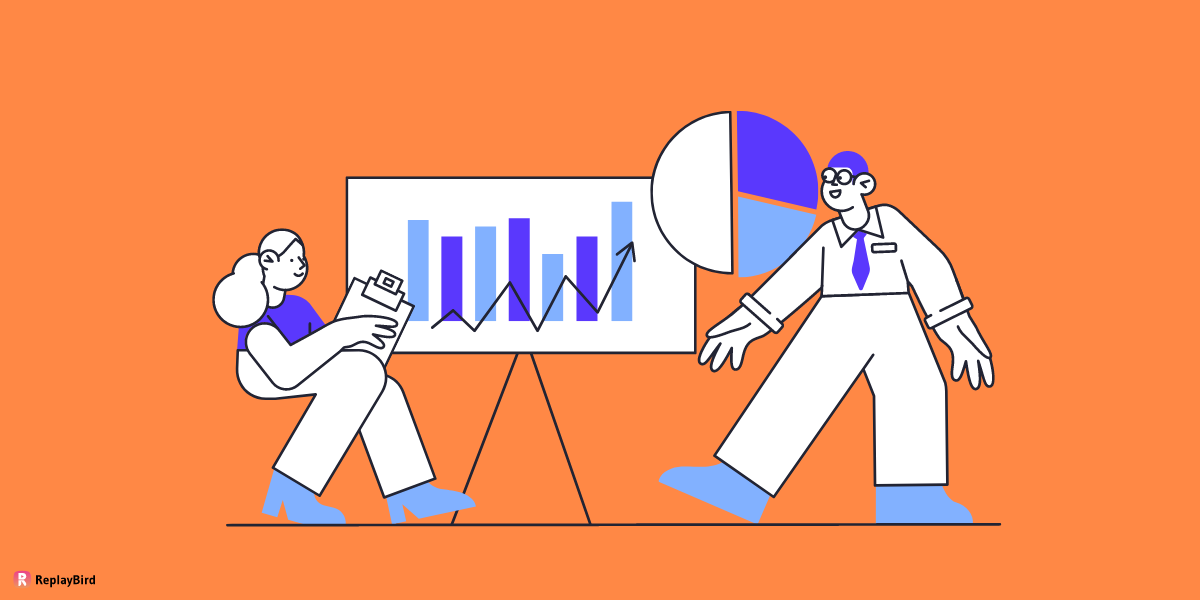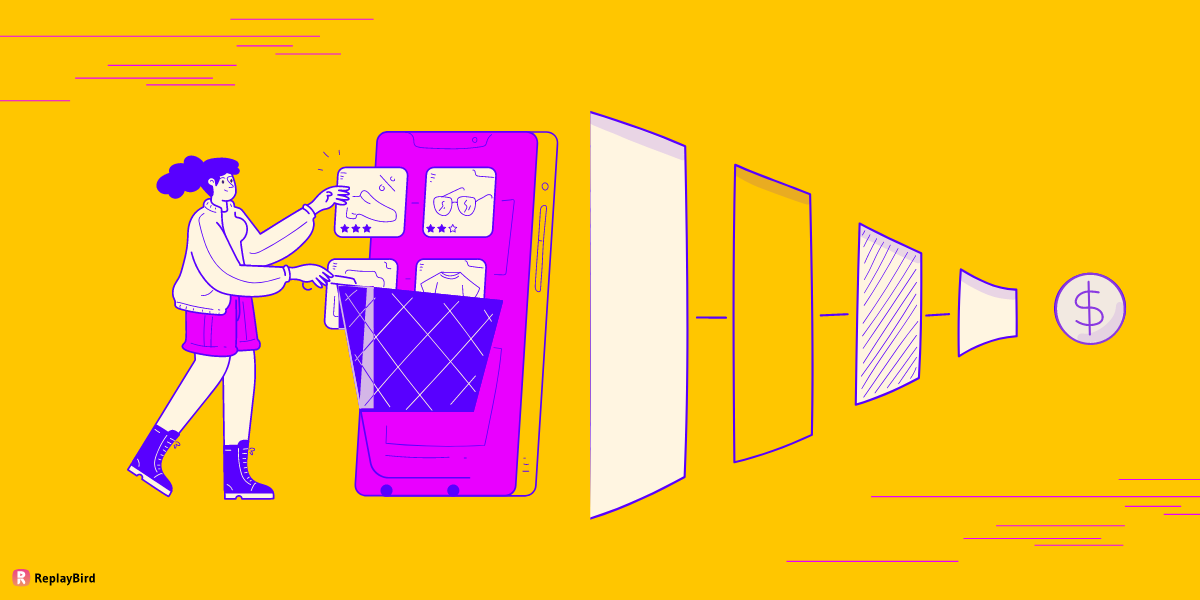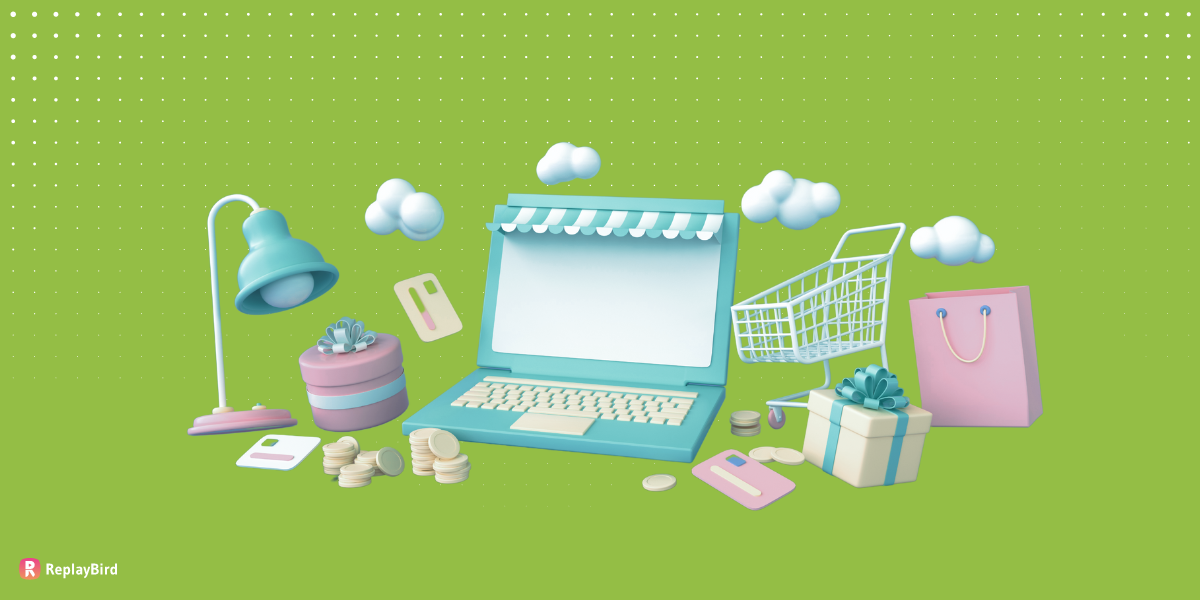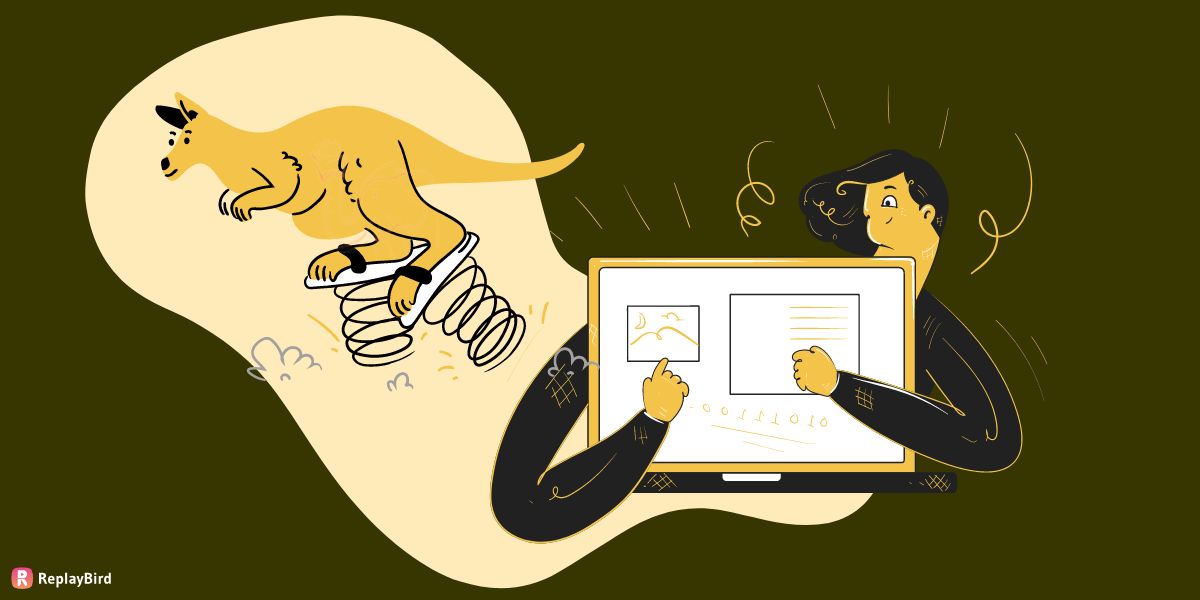Successful brands plan out their customers' journeys and try to make them as appealing and user-friendly as possible. There is the utilization of product analytics to remain informed and in the loop to keep up with the dynamic customers, markets, and economy.
The optimizing of the e-commerce conversion funnel is a lot more than just improvements in single metrics, in fact, it is the creation of LTV customers.
This e-commerce conversion funnel optimization blog covers:
- What is an e-commerce conversion funnel?
- Stages of e-commerce funnel
- Which e-commerce conversions should you be measuring?
- What does Conversion Rate Optimization (CRO) Mean?
- How is good conversion rate determined?
- Steps to optimize conversion rate
- Best CRO practices
- How to calculate CRO:
- Effective ways to increase conversions on your e-commerce website
What is an e-commerce conversion funnel?
Under e-commerce, a funnel is a metaphor that means capturing the different stages in a buyer's journey.
The movement from the wide opening of the funnel to the narrow opening stands to represent the drop off of customers and the enrichment in their knowledge as they cross the conversion path, all the while learning about your site and eventually making a buy.
Upper, middle and lower funnel are the references given to conversion tactics which refer to the level and stage of knowledge a potential client has about your products and the probability of them buying it.
Different analytic strategies are used to reach the customers at the most (the upper funnel) and the customers at the bottom (the lower funnel).
Stages of e-commerce conversion funnel
There are 3 stages of a conversion funnel that lead to the ultimate purchase at the bottom stage.
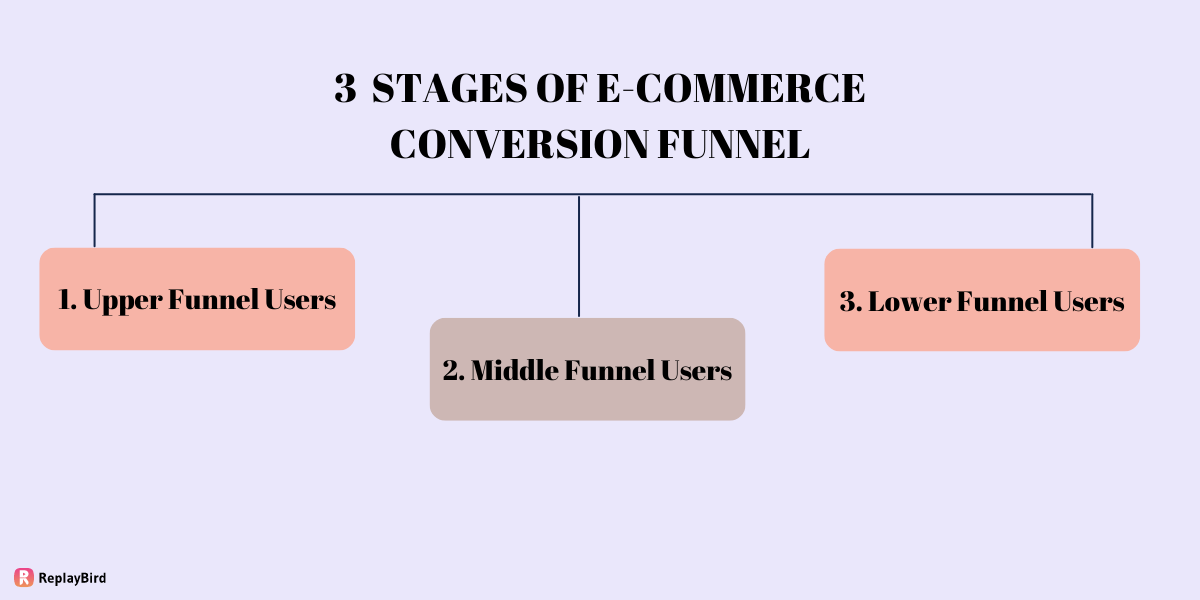
- Upper Funnel Users: In this stage, users are only beginning to start their research on your products and might be highly doubtful and unassertive about technical requirements and specifications. their interest lies in the collection of information and continuing their search to find the brand which best suits their needs.
- Middle Funnel Users: Here, the users are aware of all popular brands and probably have signed up for campaigns with them. They are now clearer about what they want and vividly take out the unnecessary choices which don't offer the value and quality that they are looking for.
- Lower Funnel Users: These users have zeroed in on their first choice and are extensively reading up on the reviews and customer experiences to gain a clear picture of what they're signing up for. In this stage, they are just about to make their decision. The ideal Lower funnel would be when they ultimately make their purchase from you.
Which ecommerce conversions should you be measuring?
In an e-commerce business, there are various methods to test and optimize using product analytics tools from A/B testing to optimizing SEO performances and even online marketing strategies.
But surely some conversion rates require to be tracked more often than others. They are as listed below:
- Page Conversion Rates: Used to compare the conversions between the different pages of your website which makes it great for A/B testing.
- Campaign Conversion Rates: These measure the effectiveness of your new and old marketing campaigns.
- Keyword Conversion Rates: These tell you which keywords are proving to be a hit and which are a miss.
- Marketing Channel Conversion Rates: This tracks the return path from various channels. It answers the question as of which platforms give you more conversions.
- Individual Ad Conversion Rates: This shows which ads bring in the most valued traffic and how the changes in them have an impact.
- Overall Conversion Rates: It measures the number of people who convert after visiting your site.
What does Conversion Rate Optimization (CRO) Mean?
CRO is the process of boosting sales by increasing the number of visitors who eventually end up making a purchase on your website. It is basically understanding what your customers want to do and then assisting them in achieving that goal.
Unfortunately, most e-commerce brands overlook the CRO process. CRO is a strong tool used in product analytics to enhance user experience as well as sales.
Improving your conversion rates by even 1% will give you good results. If your current selling percentage is 1, a 1% increase is like doubling your sales.
How is a good conversion rate determined?
Although every company protects its data as the top priority (I mean would you want your company secrets to get out?), we still have some pointers you can follow.
Most free tools can help estimate the number of visitors your website receives. Your interest is in finding out the desirable conversion rate for your sales. Most importantly, don't stick to averages. Keep in mind that average is awful.
If you're performing at the average percentage, it means you're underperforming and you have plenty of room to improve.
Steps to optimize conversion rates:
Step 1: Define conversion rates: what are you expecting the users to do?
Step 2: Map your funnel.
Step 3: Identify your drop-off point.
Step 4: Look for small fixes that have big value.
Step 5: Segmentation of users into 2 groups: Successful and Unsuccessful.
Step 6: Take your sources into consideration.
Step 7: Optimize messaging.
Step 8: Test and Repeat.
Best CRO practices
There are no intuitions or guesswork when it comes to increasing your conversion rates, so the best way to increase your conversion rates is through scientific and methodological means by using data.
Identify your best opportunities and focus on micro-conversions which then lead to your primary conversions.
You can hypothesize, measure, and test out and improve them likewise.
You might get excited about the increased user activity but remember that conversions are always the bigger picture.
An increase in conversion rates matters most and only when it increases your overall purchase rates.
For this, you need an excellent product analytics tool.
How to calculate CRO:
The conversion rate is the total percentage of people who eventually get converted as clients.
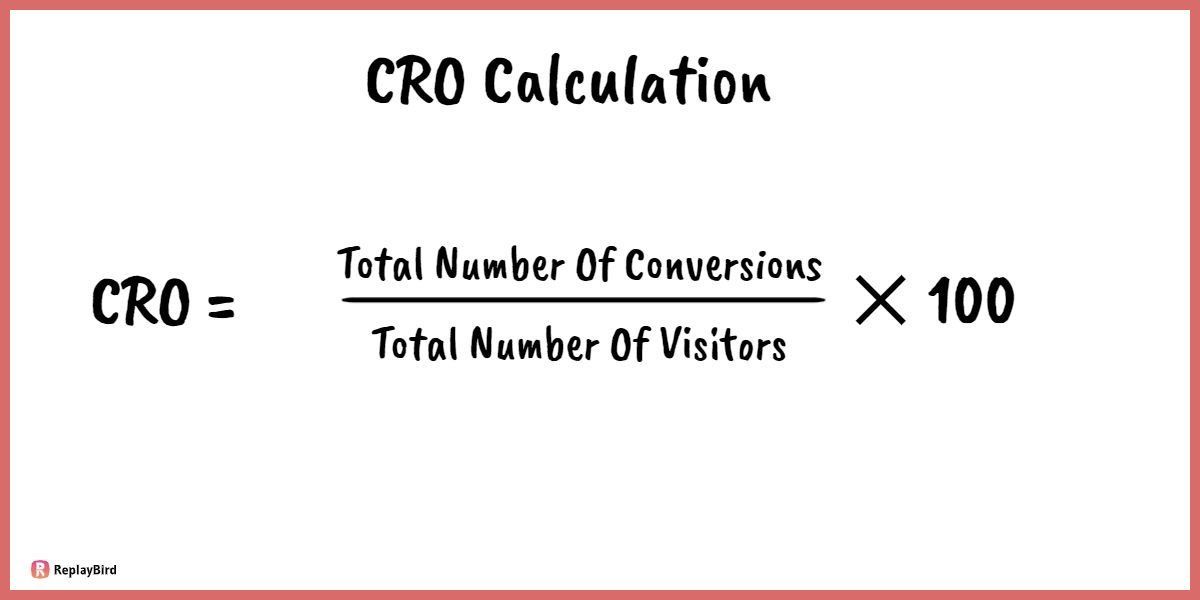
Let's say your website gets 170 visits a month; from those 170 people, you've got 8 visitors who paid for your services.
This is how you'll go about calculating your CRO:
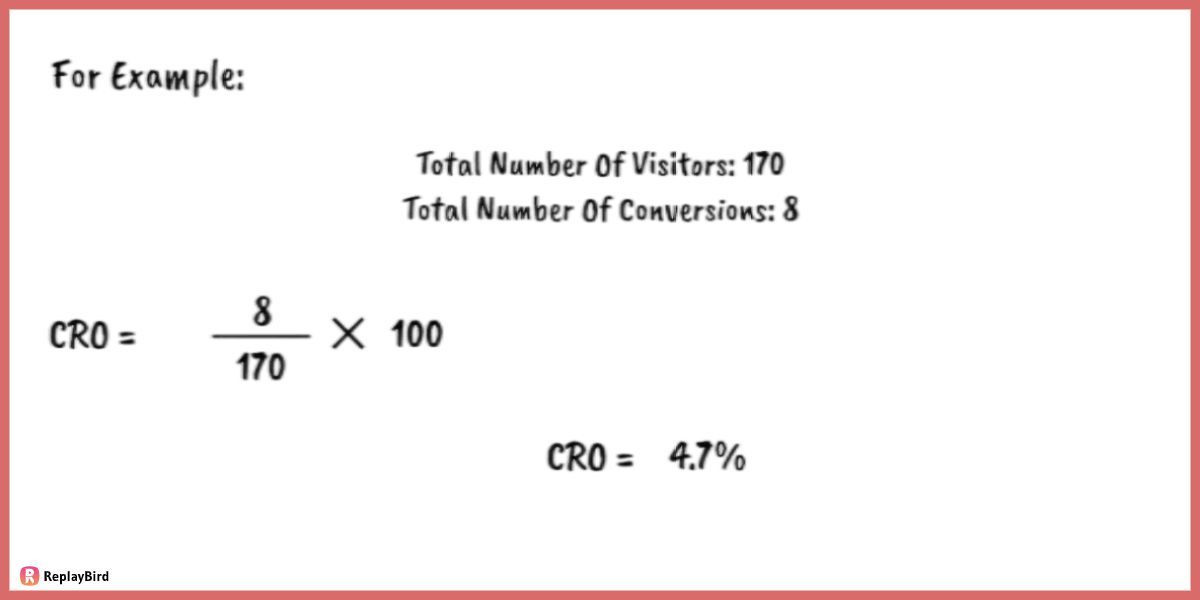
Effective ways to increase conversions on your e-commerce website
#1 Understanding your customers
The most important thing to do is to know the market demand and understand what your customers want.
Their needs are what should be fulfilled.
Design your pages keeping your customers in mind as the top priority.
Focus on their pain points, what their requirements are, and what gets them to convert.
How to go about gaining insights into your customers?
- Focus groups involving existing and new customers.
- Gain their feedback, for example, their thoughts on your customer support.
- Using surveys to ask follow-up queries.
#2 Collect feedback with on-page forms
Feedback forms help you optimize your conversion rates by removing unwanted blockages and it helps you create a site focused on what your users want.
On-page feedback forms are a great way to get direct answers from users on how they feel about your brand in general or a particular purchase they made.
Feedback forms can be added to crucial e-commerce pages such as your landing pages, check-out pages, product pages, etc.
This way you get the thoughts of users as they're interacting with your webpage.
Note: Keep your questions short and easy to understand for your users to answer in just a few clicks.
#3 Optimize your checkout process
Make your checkout page as user-friendly as possible. Majority of buyers abandon their checkout process on an e-commerce site. Wondering what causes this abandonment.
It's a complex and lengthy process that users have to undergo on the checkout page. Some pages ask for the creation of an account or the filling out of long forms. These processes bore users out and make them opt for another website that doesn't require them to create an account.
#4 Identify roadblocks in your customer's journey
A basic e-commerce funnel looks like this:
Your Homepage > Your Product Page > Cart > Checkout Page
The above flowchart shows your customer's journey to a potential buyer. Identify the hurdles your users face in their journey to avoid losing possible buyers and focus your funnel optimization in these areas.
Utilize web analytics tools such as ReplayBird to see which are the most visited page, how much time is being spent on that page, and where exactly you're losing your customers.
People might lose interest in your site due to images or copies which are not relevant or are of no value to your products, these questions you can ask as direct feedback on the page. Keep your page fresh and relevant to boost conversions.
#5 Gripping CTAs
The perfect Call-To-Action ensures that shoppers know what to do. Your page should include a CTA which clearly states the value of your product and motivates your users to take action.
You need to plan and design a button that draws your users' attention and holds it. Effective CTA is all about designing, placement, color, and also wording.
They are also used to display additional key messages or information users may need.
Wrap Up
The funnel you have is more than a mere checkout on your website. It has a huge impact on your growth metrics.
ReplayBird helps you with its integrations in multiple data sources, segmentation, and connecting with various tools in order for you to see how your users' actions have an influence on their purchases of your product on your websites.
ReplayBird - Driving Revenue and Growth through Actionable Product Insights
ReplayBird is a digital experience analytics platform that offers a comprehensive real-time insights which goes beyond the limitations of traditional web analytics with features such as product analytics, session replay, error analysis, funnel, and path analysis.
With Replaybird, you can capture a complete picture of user behavior, understand their pain points, and improve the overall end-user experience. Session replay feature allows you to watch user sessions in real-time, so you can understand their actions, identify issues and quickly take corrective actions. Error analysis feature helps you identify and resolve javascript errors as they occur, minimizing the negative impact on user experience.
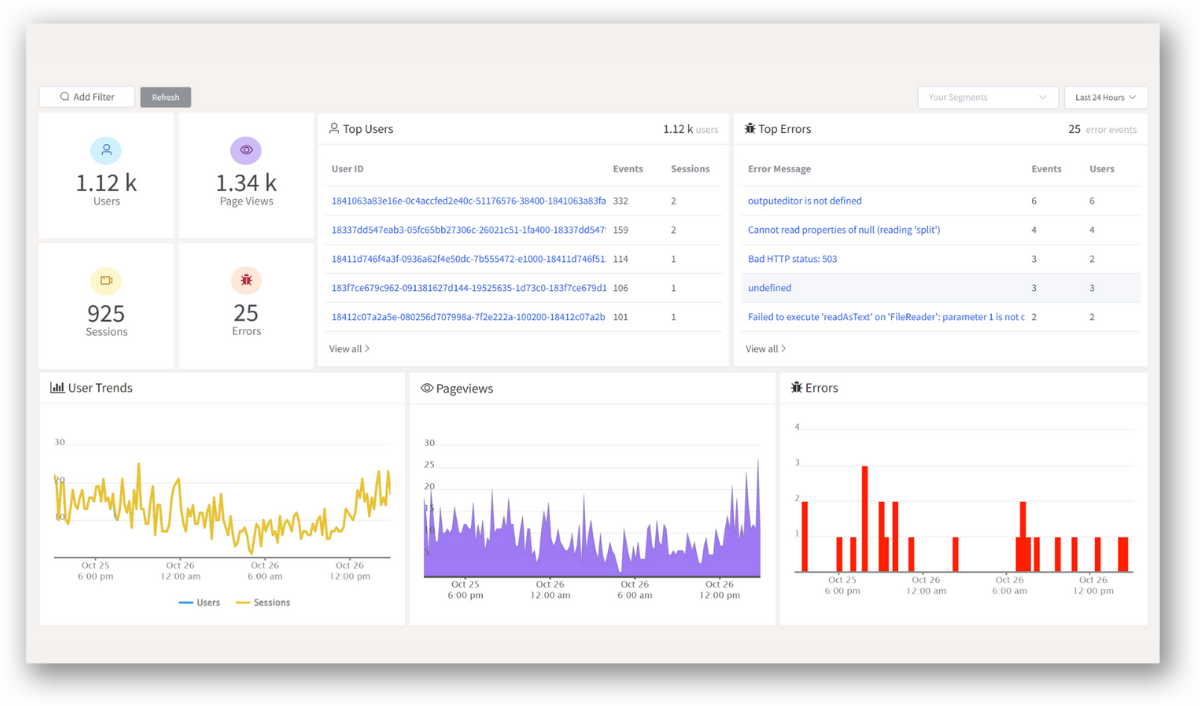
With product analytics feature, you can get deeper insights into how users are interacting with your product and identify opportunities to improve. Drive understanding, action, and trust, leading to improved customer experiences and driving business revenue growth.
Try ReplayBird 14-days free trial
Further Readings:
